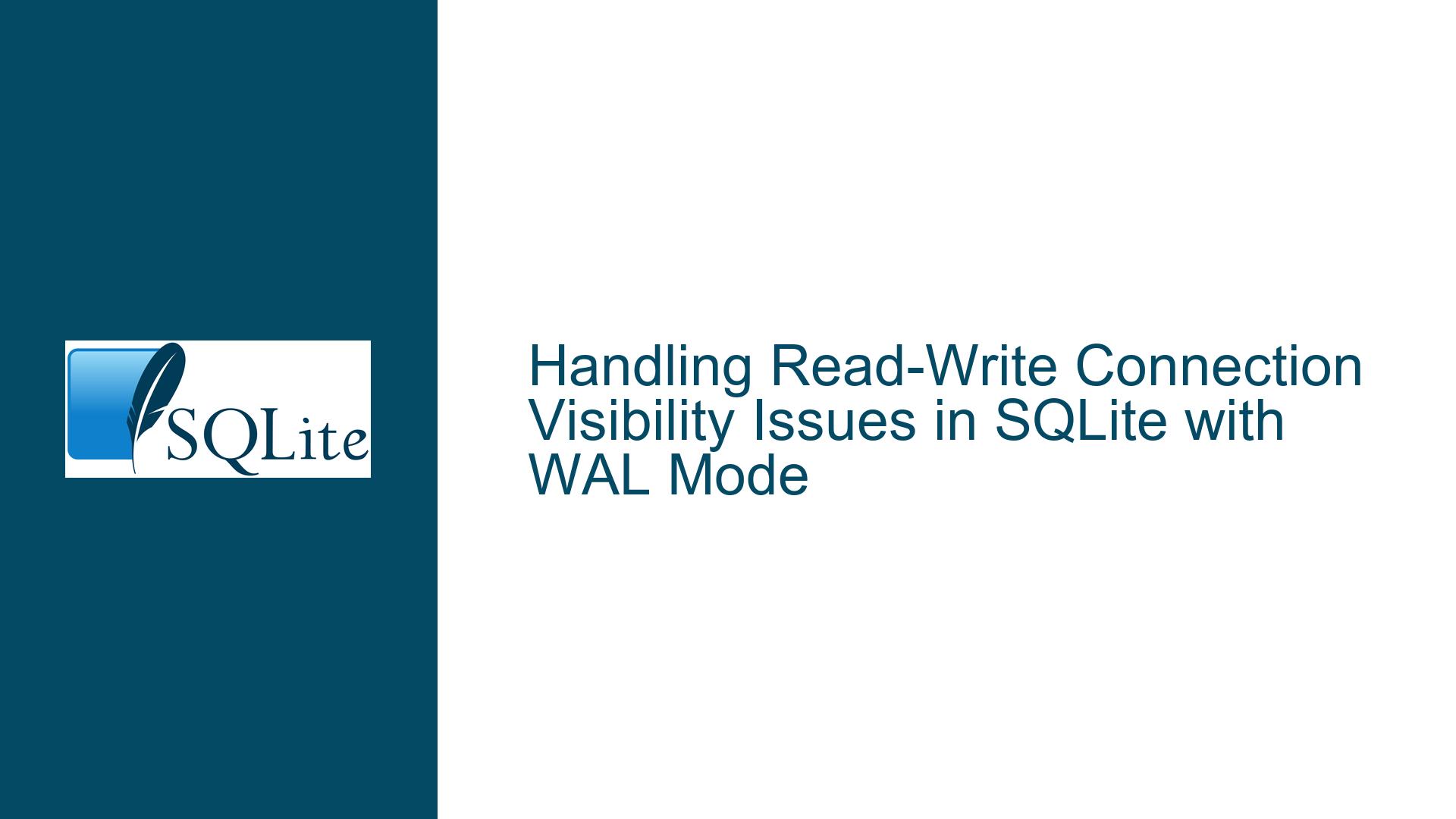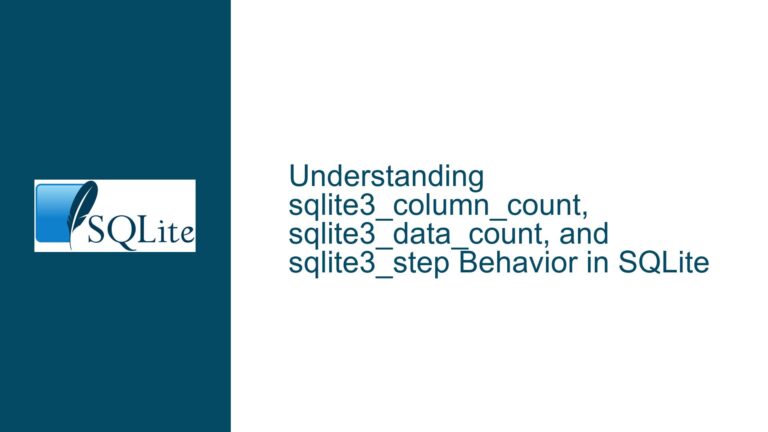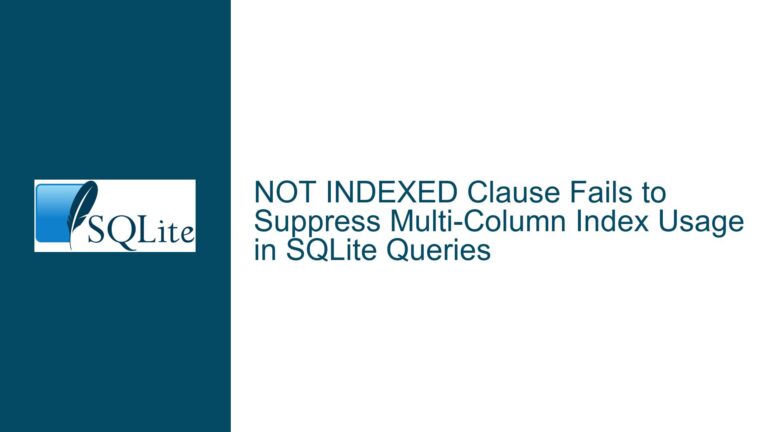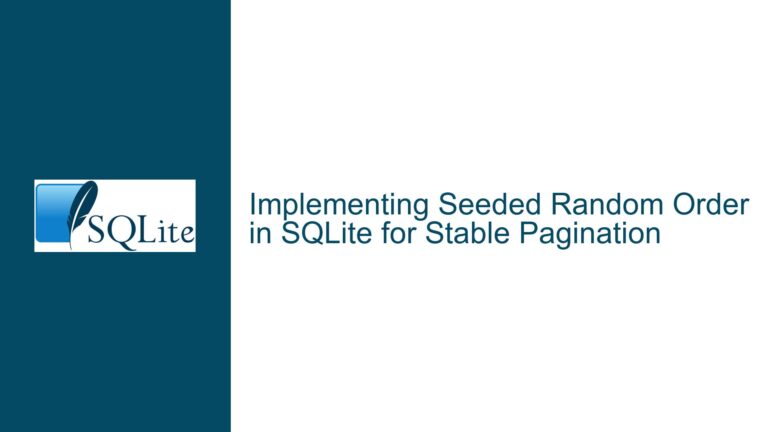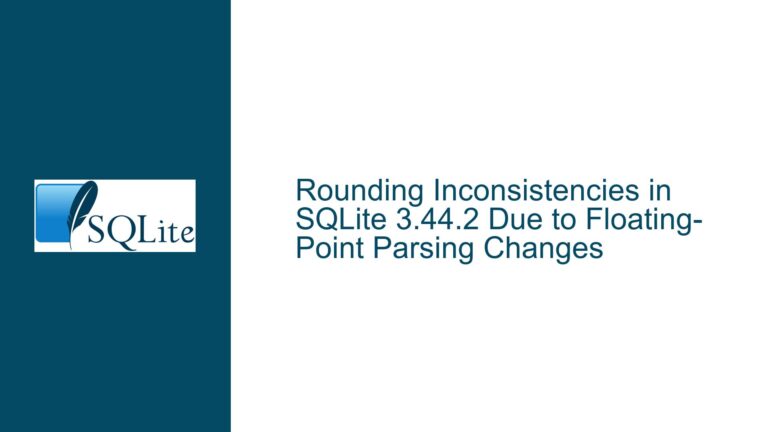Handling Read-Write Connection Visibility Issues in SQLite with WAL Mode
Understanding Read-Write Connection Visibility in SQLite WAL Mode
When working with SQLite in a multi-connection environment, particularly when using the Write-Ahead Logging (WAL) mode, one of the most common challenges developers face is ensuring that read-only (RO) connections can consistently see changes made by write-enabled (RW) connections. This issue often arises in applications where real-time data consistency is critical, such as event sourcing systems or applications requiring high concurrency. The core problem lies in how SQLite manages transaction visibility across different connections, especially when WAL mode is enabled. This post will delve into the intricacies of this issue, explore its root causes, and provide detailed troubleshooting steps and solutions to ensure consistent data visibility across connections.
The Mechanics of Transaction Visibility in WAL Mode
SQLite’s WAL mode is designed to improve concurrency by allowing reads and writes to occur simultaneously without blocking each other. However, this concurrency comes with trade-offs, particularly in how transactions are isolated and how changes are propagated across connections. In WAL mode, each connection maintains its own view of the database, which is determined by the point in time when the connection last began a transaction. This means that a read-only connection will not see changes made by a write-enabled connection until the read-only connection starts a new transaction.
The visibility of changes across connections is governed by the sqlite3_txn_state function, which indicates the transaction state of a connection. When a connection is not in an active transaction (sqlite3_txn_state returns 0), any subsequent SELECT statement will see all changes committed to the database before the transaction began. However, if the connection is already in a transaction, it will continue to see the database state as it was at the start of that transaction, regardless of changes made by other connections.
This behavior can lead to situations where a read-only connection appears to be "stuck" seeing an old version of the database, even after a write-enabled connection has committed changes. This is particularly problematic in applications where real-time data consistency is required, as the read-only connection may not reflect the most recent updates until it starts a new transaction.
Diagnosing and Resolving Visibility Issues
To address visibility issues between read-only and write-enabled connections in SQLite WAL mode, it is essential to understand the underlying mechanisms and implement strategies to ensure that changes are propagated correctly. The following steps outline a comprehensive approach to diagnosing and resolving these issues:
Ensure Proper Transaction Management: The first step in resolving visibility issues is to ensure that transactions are managed correctly across all connections. Write-enabled connections should explicitly begin and commit transactions using
BEGINandCOMMITstatements. This ensures that changes are committed to the database and become visible to other connections. Similarly, read-only connections should begin new transactions periodically to ensure they see the latest changes. This can be done by explicitly issuing aBEGINstatement or by ensuring that each SELECT statement is executed within its own transaction.Monitor Transaction State with
sqlite3_txn_state: To determine whether a read-only connection is seeing the latest changes, you can use thesqlite3_txn_statefunction to monitor the transaction state of the connection. If the connection is not in an active transaction (sqlite3_txn_statereturns 0), any subsequent SELECT statement will see all changes committed to the database before the transaction began. If the connection is in an active transaction, you may need to commit or roll back the transaction and start a new one to see the latest changes.Use
PRAGMA data_versionto Detect Changes: Another approach to ensuring that read-only connections see the latest changes is to use thePRAGMA data_versioncommand. This command returns a value that is incremented every time the database is modified. By periodically checking thedata_versionon the read-only connection, you can determine whether changes have been made to the database and whether the connection needs to start a new transaction to see those changes. However, note thatdata_versionwill not change if the request is made while a transaction is in progress on the read-only connection, even if changes have been committed on another connection.Implement a Polling Mechanism: In some cases, it may be necessary to implement a polling mechanism to ensure that read-only connections see the latest changes. This can be done by periodically checking the
data_versionor another indicator of database changes (such as a customuser_version) and starting a new transaction on the read-only connection when changes are detected. While this approach introduces some overhead, it can be an effective way to ensure real-time data consistency in applications where it is critical.Consider Alternative Journal Modes: While WAL mode offers significant advantages in terms of concurrency, it may not be the best choice for all applications. If visibility issues persist and cannot be resolved through proper transaction management or polling mechanisms, consider using an alternative journal mode, such as
DELETEorTRUNCATE. These modes do not offer the same level of concurrency as WAL mode, but they may provide more predictable behavior in terms of transaction visibility.Optimize Connection Handling: Finally, ensure that connections are handled efficiently to minimize the risk of visibility issues. This includes closing unused connections, avoiding long-running transactions, and ensuring that connections are properly configured for their intended use (e.g., setting
SQLITE_OPEN_READONLYfor read-only connections). By optimizing connection handling, you can reduce the likelihood of visibility issues and improve overall application performance.
Conclusion
Handling read-write connection visibility issues in SQLite with WAL mode requires a deep understanding of how transactions are managed and how changes are propagated across connections. By ensuring proper transaction management, monitoring transaction state, using PRAGMA data_version, implementing polling mechanisms, considering alternative journal modes, and optimizing connection handling, you can effectively address these issues and ensure consistent data visibility in your application. While these strategies may require some additional effort, they are essential for maintaining data integrity and providing a seamless user experience in high-concurrency environments.
